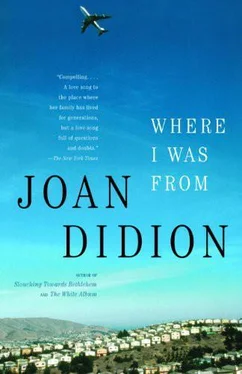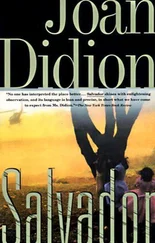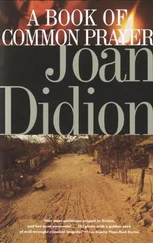“There in my own small town,” Hanson tells us in The Land Was Everything , “we have torn up vineyards and now have planted the following crops: Wal-Mart, Burger King, Food-4-Less, Baskin-Robbins, Cinema 6, Denny’s, Wendy’s, Payless, Andersen’s Pea Soup, the Holiday Inn, McDonald’s, Carl’s Jr., Taco Bell, four gas stations, three shopping centers, two videotape stores, and a car wash.” In line with the thrust of his argument, Hanson offers this list as evidence of “change,” specifically of the moral or spiritual impoverishment to which he believes the loss of the yeoman ethic in the San Joaquin Valley has led. Some readers — those, say, who remain unconvinced that there was ever a yeoman ethic in the San Joaquin Valley to lose — might take from the list evidence of a less elusive impoverishment: the enterprises named are in the main national chains, or franchises, not the kinds of entrepreneurial activity calculated to return either money or opportunity to the community.
According to a study conducted by the Public Policy Institute of California, the poverty rate in the San Joaquin Valley in the year 2000 was in fact twenty-two percent of the population, the highest in the state, which in turn had an overall poverty rate, when adjusted for cost of living, exceeded in the United States only by that of the District of Columbia. This overall California poverty rate began exceeding that of the rest of the nation only in the late 1980s, but being poor in the Central Valley was not a new condition. In 1980, of the ten American metropolitan areas most reliant on public assistance, six were in the Sacramento and San Joaquin Valleys, running south from Redding and Yuba City-Marysville and Stockton straight down through Modesto and Fresno and Visalia. Many assumed California’s rising poverty rate to be a function of immigration, and to some degree, in the short term, it was: the foreign-born, particularly those from Southeast Asia and Hispanic America, who did have the highest rate of poverty in the state.
In the Central Valley, however, immigration did not tell the whole story. In 1998, Tulare County began paying its welfare clients the cost of relocating in other states, providing an average of $2,300 a client to rent a U-Haul van and buy gas and stay in motels en route and pay first-and-last-month rent on a place to live once they get there. This policy, which also includes e-mailing job applications and mining the Internet for apartment rentals, has since been adopted by four other San Joaquin counties, Kings, Madera, Fresno, and Kern. In June 2001 and June 2002, reporters from first The New York Times and then The Washington Post interviewed samplings of these relocated clients. There were David Langley and his wife and child, who moved from Visalia to Colorado, as did Jackie and Michael Foster, “with their year-old red-haired son.” There was Lorrie Gedert, who moved with her two daughters from Ivanhoe, about ten miles outside Visalia, to Little Rock. There were Gloria and Nathan Dickerson, who moved with their two children, Emily and Drake, from Visalia to Ocala, Florida. There were Richard and Zena White, who moved from Fresno to Slidell, Louisiana, where, according to the Post , both are now working full-time, “Zena as an assistant manager at a Chevron gas station and Richard as a shift manager at McDonald’s.” What first strikes the reader of these reports is that the names of the former Californians interviewed do not uniformly suggest recent immigration from Southeast Asia or Hispanic America. What next strikes the reader is that even such marginal jobs as assistant manager at the Chevron station and shift manager at the McDonald’s appear to have been unobtainable in the San Joaquin Valley, here where the vineyards got torn up so the Wal-Marts and the Burger Kings and the Taco Bells could grow, here, as Frank Norris saw it in 1901, in this corner of a great nation, here, on the edge of the continent, here, in this valley of the West, far from the great centers, isolated, remote, lost.
FOR most of my life California felt rich to me: that was the point of it, that was the promise, the reward for having left the past on the Sweetwater, the very texture of the place. This was by no means to say that I believed all or even most Californians to be rich, only to suggest that the fact of having no money seemed to me to lack, in California, the immutable gravity that characterized the condition elsewhere. It was not designed to be a life sentence. You were meant, if you were a Californian, to know how to lash together a corral with bark, you were meant to know how to tent a raft and live on the river, you were meant to show spirit, kill the rattlesnake, keep moving. There were in California a lot of “dead brokes,” Henry George had pointed out in 1868, in a passage from “What the Railroad Will Bring Us” that got read to me (rather selectively, in retrospect) by my grandfather, “but there never was a better country to be ‘broken’ in, and where almost every man, even the most successful, had been in the same position, it did not involve the humiliation and loss of hope which attaches to utter poverty in older and more settled communities.”
That I should have continued, deep into adult life, to think of California as I was told as a child that it had been in 1868 suggests a confusion of some magnitude, but there it was. It’s not a word we use , my mother had said about class. It’s not the way we think. Only in the 1980s did certain facts — two of them, not unrelated — manage to penetrate what was clearly a fairly tenacious wish not to examine whatever it was I needed to believe. The first fact, which entered my attention as an almost personal affront, was that California no longer felt rich enough to adequately fund its education system. The second, or corollary, fact was that there seemed to be many towns in California — including towns I knew, towns I thought of as my own interior landscape, towns I had thought I understood, towns in the Sacramento and San Joaquin Valleys — so impoverished in spirit as well as in fact that the only way their citizens could think to reverse their fortunes was by getting themselves a state prison. Since the building and staffing of new prisons were major reasons why California no longer felt rich enough to adequately fund its education system, this second fact initially presented itself as an even deeper affront than the first, evidence that a “new” California had finally and fatally sold out the old.
Then I remembered, then I realized.
We were seeing nothing “new” here.
We were seeing one more version of making our deal with the Southern Pacific.
We were seeing one more version of making our bed with the federal government.
We were seeing one more enthusiastic fall into a familiar California error, that of selling the future of the place we lived to the highest bidder, which was in this instance the California Correctional Peace Officers Association.
The California Correctional Peace Officers Association is the prison guards’ union, a 29,000-member force that has maintained for some years now the most effective lobbying operation in Sacramento. In the 1998 election cycle, for example, the union funneled over two million dollars to Grey Davis’s gubernatorial campaign and another three million dollars to various other candidates and propositions. “All I’ve ever asked is that we get to play in the ballpark with all the big guys and gals out there,” Don Novey told The Los Angeles Times in 2000. Don Novey is the former guard at Folsom State Prison who became in 1980 the president of the California Correctional Peace Officers Association. “They call us the 800-pound gorilla. But we’re just taking care of our own like everybody else.” Don Novey refers to those who consider the need for new prisons an arguable proposition as “the other element.” He gave $75,000 to the opponent of a state senator who had once spoken against a prison bond issue. “If Don Novey ran the contractors’ union,” a Republican strategist told the Times , “there’d be a bridge over every puddle in the state.” The prison guards were in California the political muscle behind the victims’ rights movement. The prison guards were in California the political muscle behind the 1994 “three strikes” legislation and initiative, the act that mandated a sentence of twenty-five years to life for any third felony conviction, even for crimes as minor as growing a marijuana plant on a windowsill or shoplifting a bottle of Ripple. The prison guards were the political muscle that had by the year 2000 made the California corrections system, with thirty-three penitentiaries and 162,000 inmates, the largest in the western hemisphere.
Читать дальше
Конец ознакомительного отрывка
Купить книгу












